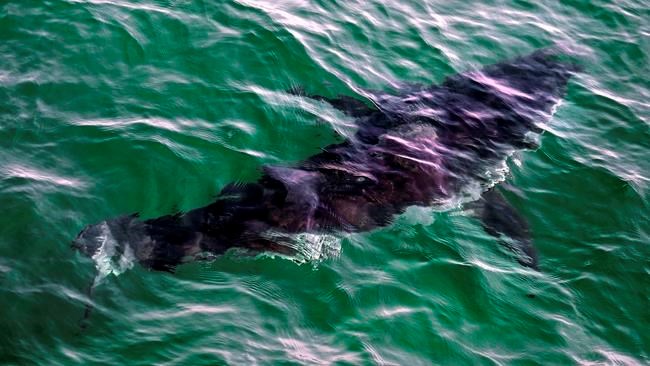A proposed tourism project off the coast of Nova Scotia to let people watch great white sharks through the bars of a submerged cage requires a balancing act between sightseeing and the needs of the animals, says one expert.
Shark watching is a growing global tourism industry, but it has the potential to do harm, Fred Whoriskey, executive director of the Ocean Tracking Network at Dalhousie University, said in a recent interview.
"The balancing act is on the one hand, getting your benefits to come out of that ecotourism activity, versus on the other hand, the potential to either do harm to the animals physically or change their behaviour in ways that could begin to have effects not just on those animals, but on entire ecosystems."
Atlantic Shark Expeditions said it plans to launch its shark-watching tours this fall, offering tourists the opportunity to pay to view the animals from the comfort of a boat — or from inside a cage submerged in the water.
Owner Neil Hammerschlag, who has a PhD in marine biology and fisheries from the University of Miami, said he's conducted research on sharks and the potential effects of ecotourism.
"Unlike some other shark dive tourism that might involve feeding the animals, we don't intend, or we try not to feed the animals," he said.
"We also don't stay in the same spot. We're going to be moving around."
Hammerschlag said the primary goal of his venture is science. The ecotourism project, he said, is to fund his scientific work, which includes photographing the animals and tagging them to monitor their movements.
"Science is the driver and ecotourism is coming along for the ride," Hammerschlag said.
Aaron MacNeil, professor in Dalhousie University's biology department, said he questions Hammerschlag's motivations.
"If this was a scientific enterprise, you wouldn't be charging people money and creating a business around it. Right? So the motivation, the primary objective here, seems to be having people come and have an experience with these animals. And that's not what you would do if your primary goal is a scientific study."
MacNeil said he is particularly concerned about Hammerschlag's plan to offer sightseeing tours about five kilometres off the shore of Liverpool, N.S., where surfers commonly ride waves.
"For somebody to come in and plunk down there, you know, this shark caging operation, a diving operation … that's probably not in the public interest, it's going to have a raised threat for recreational users."
Hammerschlag, meanwhile, said the five-kilometre distance off southwest Nova Scotia is "really far away" from the shore and that the tourist boats won't interfere with surfers.
But MacNeil said that distance "seems to be pulled out of thin air," adding that he would like the government to come up with a science-based justification for that number.
Fisheries and Oceans Canada confirmed it has issued a Species at Risk Act permit to Atlantic Shark Expeditions, which allows the company to conduct scientific research regarding the animals' population trends, health and habitat. The permit will be valid for the period of May 1 to Nov. 30, for the years 2023 and 2024, said department spokeswoman Christine Lyons.
"These permits are issued under specific circumstances defined in the Species at Risk Act and only when certain preconditions are met," she said in a statement. Lyons declined an interview request to explain what those preconditions were, how the department would monitor the company's operations or what justified the five-kilometre distance from shore. She said she would send a response next week.
The great white shark is listed as vulnerable by the International Union for the Conservation of Nature, and listed as endangered by the Committee on the Status of Endangered Wildlife in Canada.
Whoriskey said the most important measure to take when dealing with an endangered species is to protect them from harm. He said that if animals see people feeding them from boats, "you're changing the behaviour of the animals, you're conditioning them to believe that people mean food."
"And when a boat comes up, they'll come up and they'll start looking for food from people and potentially down the road even becoming aggressive if they don't get food.”
A 2020 study in the journal Environmental Law backed Whoriskey's statements, saying that while tourism may provide economic incentives to protect shark populations in some cases, feeding the animals has both ecological and safety implications. The effects of such actions, the study said, are hotly contested among scientists.
"Most report some behavioural changes in participating sharks, but the significance and severity of these changes is the subject of intense and ongoing debate," said the study, called "Blood in the water: shark feeding, tourism, and the law."
Hammerschlag disagreed, saying a shark is not going to associate a boat with a human.
"The idea is to attract the shark to the boat to get their interest, but the interest might not last very long," he said. "And often when the activity stops, the animals go back to doing their normal thing and don't seem to hang out in those areas."
This report by The Canadian Press was first published April 15, 2023.
Hina Alam, The Canadian Press



